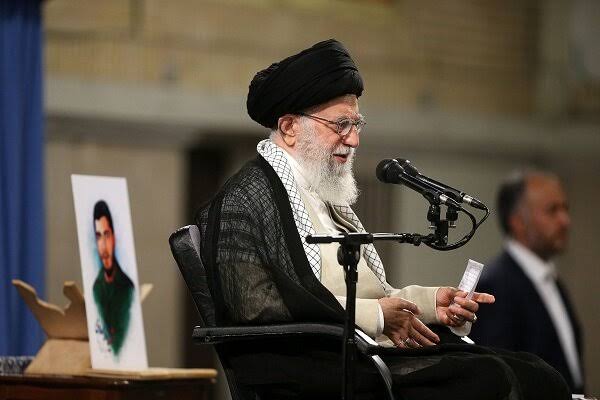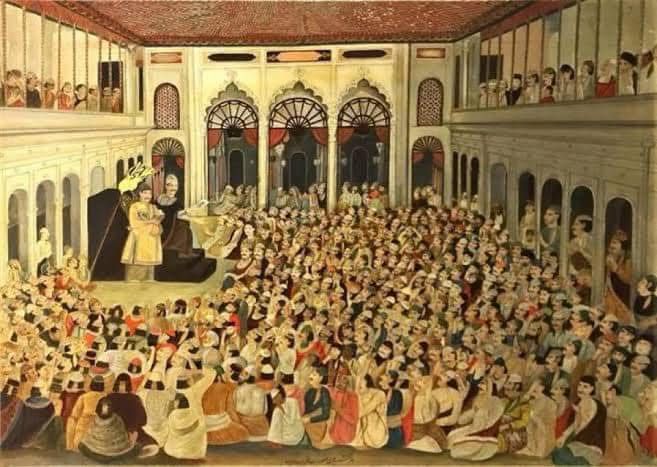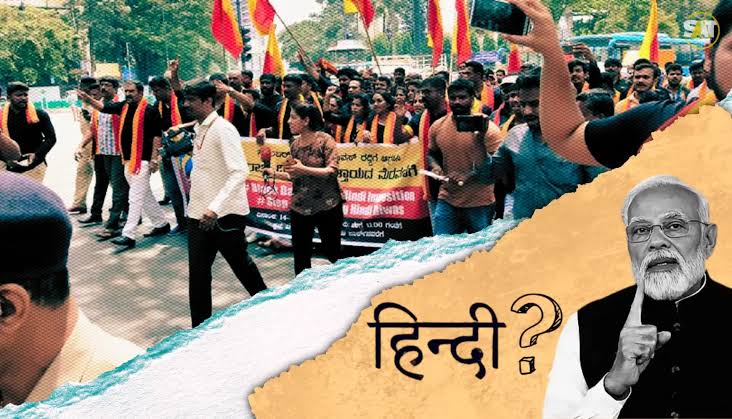Iran-Israel War and the Rise of Ayatollah Khamenei as a Global Leader

The Iran-Israel war of June 2025 has established Iran’s Supreme Leader, Ayatollah Ali Khamenei, as a global leader. Khamenei’s resolve, strategic diplomacy, and regional influence have positioned him as a significant figure on the world stage. In the future, Khamenei’s role will prove decisive not only for Iran but for the entire Middle East and the global order. This war and Khamenei’s leadership will be recorded as a pivotal turning point in world history. The Middle East, a complex and tense region in Asian geopolitics, has long been a center of conflict among various nations and groups. In recent years, particularly in June 2025, the war between Iran and Israel has added a new chapter to the global stage. This war has not only impacted the regional balance of power but has also provided an opportunity for Iran’s Supreme Leader, Ayatollah Ali Khamenei, to emerge as a global leader. This article analyzes Khamenei’s global role in the context of the Iran-Israel war.
Background and Context of the Iran-Israel War
The roots of tension between Iran and Israel trace back to the 1979 Islamic Revolution, when the Shah’s regime in Iran ended, and the Islamic Republic was established under the leadership of Ayatollah Ruhollah Khomeini. This Islamic Revolution fundamentally transformed Iran’s foreign policy, particularly its stance toward Israel. While there was some cooperation between Iran and Israel under Shah Mohammad Reza Pahlavi, post-revolution, Israel was considered an enemy by Iran. Subsequently, Iran began supporting proxy groups such as Hezbollah and Hamas, which further escalated tensions with Israel.
In 2023 and 2024, tensions gradually escalated into open conflict. The Hamas attack on Israel on October 7, 2023, heightened regional instability, in response to which Israel intensified attacks on Iranian-backed targets in Gaza, Lebanon, and Syria. The Israeli attack on the Iranian embassy in Damascus on April 1, 2024, further aggravated the situation. The full-scale war that began on June 13, 2025, with Israeli attacks on various Iranian cities saw both sides launching missile and drone strikes, resulting in hundreds of deaths and threatening regional stability. The role of the United States was also significant in this war. U.S. President Donald Trump targeted Iran’s nuclear sites and increased military presence in the region. However, Trump announced a temporary ceasefire on June 24, 2025, which collapsed within hours. This war not only caused military and economic damage but also created new alliances and rifts in global diplomacy.
Ayatollah Khamenei’s Leadership and Global Role
Following the death of Ayatollah Ruhollah Khomeini on June 3, 1989, Ali Khamenei, who was Iran’s President from 1981 to 1989, was appointed as the Supreme Leader of the Islamic Republic of Iran, a position that holds both religious and political authority. Since then, Ayatollah Ali Khamenei has remained in this role. In the 1980s, Iran faced the Iran-Iraq War (1980-88) and internal political instability, necessitating strong and acceptable leadership. Khamenei was considered a moderate and pragmatic leader capable of balancing hardliner and reformist factions. His loyalty to Khomeini, political experience, and dedication to the Islamic Revolution were key factors in his selection.
During the 2025 war, Ayatollah Ali Khamenei emerged as a bold and resolute leader. His leadership became a source of inspiration not only for Iran but for the entire Shia community and regional resistance movements. Khamenei’s strategies and statements established him as a leader unwilling to bow to Western pressure or Israeli attacks
.
Resolute Stance and National Unity
Ayatollah Ali Khamenei played a crucial role in strengthening Iran’s military capabilities by astutely reading the global political environment and domestic conditions. Under his leadership, Iran not only prepared its defense capabilities to counter regional challenges but also developed them to emerge as a formidable force on the global stage.
Khamenei consistently prioritized a “resistance economy” and military self-reliance. After the Iran-Iraq War, when Iran faced a shortage of weapons due to Western sanctions, Khamenei decided to promote the indigenous defense industry to sustain a prolonged war, if needed. Under his leadership, Iran initiated an extensive ballistic missile program, developing missiles such as Shahab-1 (1,300 km), Shahab-2 (500 km), Shahab-3 (1,300-2,000 km – considered one of Iran’s most dangerous missiles according to the BBC), Sajjil (2,000-2,500 km), Khaibar (2,000 km), Fateh-2 (1,400 km), Fateh-110, and Khorramshahr, with ranges exceeding 2,000-2,500 kilometers. According to sources, these ballistic missiles were not only integrated into Iran’s arsenal but also supplied to Iran-backed regional groups such as Hezbollah in Lebanon and the Houthis in Yemen. The unveiling of the hypersonic missile “Fateh” in 2023 was a result of Khamenei’s strategy, enabling the targeting of Israeli and U.S. bases in Middle East.
Similarly, under Khamenei’s leadership, Iran made remarkable progress in drone technology. Drones such as the Shahed-136 and Mohajer-10 played a significant role in regional conflicts, particularly in the 2025 Iran-Israel war. These drones are cost-effective, efficient, and exportable, enhancing Iran’s military capabilities. Khamenei also strengthened Iran’s naval capabilities. Under his guidance, the Islamic Revolutionary Guard Corps (IRGC) Navy developed an asymmetric warfare strategy in the Persian Gulf. Indigenous warships and submarines, such as Jamaran and Fateh, bolstered Iran’s maritime power. Furthermore, Khamenei made the IRGC the backbone of Iran’s military. The IRGC not only defends the country but also supports regional proxy groups such as Hezbollah, Hamas, and the Houthi rebels. Under Khamenei’s leadership, the IRGC’s Quds Force expanded its regional influence, with significant budget increases enabling the development of advanced weapons and cyber warfare capabilities. In the 2025 war, the IRGC coordinated missile and drone attacks, successfully challenging Israel’s defense systems.
Additionally, Ali Khamenei made Iran’s nuclear program a symbol of national pride and strategic resistance. Although he has repeatedly stated that nuclear weapons are against Islam, the decision to enrich uranium to 60% (by 2023) was part of his strategy. This move served as a pressure tactic against Western countries and forced Israel into a defensive stance during the war. Khamenei’s strategy positioned Iran as a “threshold” nuclear state, strengthening its position in global diplomacy.
Iran has been a signatory to the Non-Proliferation Treaty (NPT) since 1970 and appears committed to preventing nuclear weapons proliferation and promoting peaceful nuclear energy use. It claims that its nuclear program, under IAEA oversight, is solely for peaceful purposes such as energy production and medical research. Khamenei considers nuclear weapons contrary to Islamic principles and has issued a fatwa (religious decree) against them.
Iran’s Nuclear Energy Program
Iran does not possess nuclear weapons, but its nuclear energy program raises concerns in the international community. Iran has enriched uranium to 60%, which is below the 90% required for nuclear weapons but remains a concern for Western countries, as this material and technology could be used to develop nuclear weapons. They argue that 20% enrichment is sufficient for peaceful purposes. The International Atomic Energy Agency (IAEA) was monitoring Iran’s nuclear program, but after Israel and the U.S. bombed Iran’s nuclear facilities in the 2025 war, Iran refused to cooperate with the IAEA, believing that the agency shares its nuclear development information with the U.S. and Israel. This development further heightened Western concerns. Under Khamenei’s leadership, ensuring uranium enrichment facilities were located 300 feet underground in a tunnel reflects his far-sighted strategic and military thinking. Designing tunnels to protect nuclear facilities from airstrikes or other attacks demonstrates his forward-thinking approach. Destroying these underground facilities is extremely difficult. Although the U.S. B-2 stealth bombers heavily targeted these tunnels in the 2025 war, available information suggests that the U.S. was unable to significantly damage Iran’s nuclear facilities.
Khamenei’s greatest military achievement is the creation of the “Axis of Resistance.” This network includes Hezbollah in Lebanon, the Assad regime in Syria, Shia militias in Iraq, and the Houthis in Yemen. This strategy allowed Iran to exert pressure on Israel and the U.S. without direct involvement in the conflict. In the 2025 war, Hezbollah’s rocket attacks and the Houthis’ naval attacks in the Red Sea demonstrated the effectiveness of Khamenei’s strategy.
Under Khamenei’s leadership, Iran also made progress in cyber warfare and space technology too. Iranian cyberattacks targeted Israeli infrastructure, such as power grids and water systems, causing damage. Additionally, the IRGC’s space unit launched military satellites in 2020 and 2023, enhancing Iran’s surveillance and communication capabilities. These steps are part of Khamenei’s forward-thinking strategy, addressing the needs of modern warfare.
“Iran will Never Surrender”
Khamenei has repeatedly stated that Iran “will never surrender.” This statement created a “rally around the flag” effect among the Iranian public, garnering widespread support for his leadership during the war. Protests and rallies in Tehran demonstrated public solidarity against the U.S. and Israel, reflecting the strength of Khamenei’s leadership.
In expanding regional influence, Khamenei increased Iran’s influence through allies such as Hezbollah, Hamas, and Syria. In this war, Hezbollah’s activity and Iran’s missile capabilities forced Israel into a defensive posture. Khamenei’s strategy aided in enhancing his global influence, particularly in countries opposing Western dominance.
In the realm of global diplomacy, during the war, Khamenei strengthened ties with countries like Russia, China, and Pakistan. Russia recognized Iran’s right to self-defense, while Pakistan called for an emergency UN meeting in support of Iran. These steps highlight Khamenei’s diplomatic acumen, which helped establish him as a global leader.
Khamenei’s image is not free from criticism. Western countries have accused him of religious extremism and human rights violations. Some Western countries and Iranian citizens believe his policies are leading the country toward economic and social crises. Despite this, his resolve during the war strengthened his image. Strategically, Iran’s lack of an Iron Dome-like defense system to protect against missile attacks and a significant deficiency in air force capabilities were evident in this war. Iran must focus on these areas to bolster its defense.
Khamenei’s Rise as a Global Leader
Khamenei’s emergence as a global leader is the result of several factors. First, his unwavering leadership style has positioned him as a strong opponent of Western powers. Second, Iran’s military and technological advancements, particularly the use of hypersonic missiles, have lent credibility to Khamenei’s leadership. Third, regional and global alliances have established him as a leader opposing a unipolar world order.
The war has positioned Khamenei as a polarizing figure on the global stage. Israel’s continuous atrocities against Palestinians and Iran since 2023 have earned Israeli Prime Minister Netanyahu a reputation as a cruel and authoritarian ruler, while Khamenei, standing firmly against him and U.S. President Donald Trump, has gained remarkable global popularity. Some view him as a threat to peace, while others, particularly in non-Western countries, see him as a symbol of resistance against imperialism. This image appears capable of influencing the regional balance of power and presenting new possibilities in global diplomacy.
(Author, a PhD from the School of International Studies, JNU, formerly served as the Media Adviser to Bihar government. He can be accessed via email: krsharma230@gmail.com)

 14 hours ago
14 hours ago





[[comment.comment_text]]